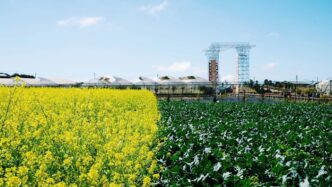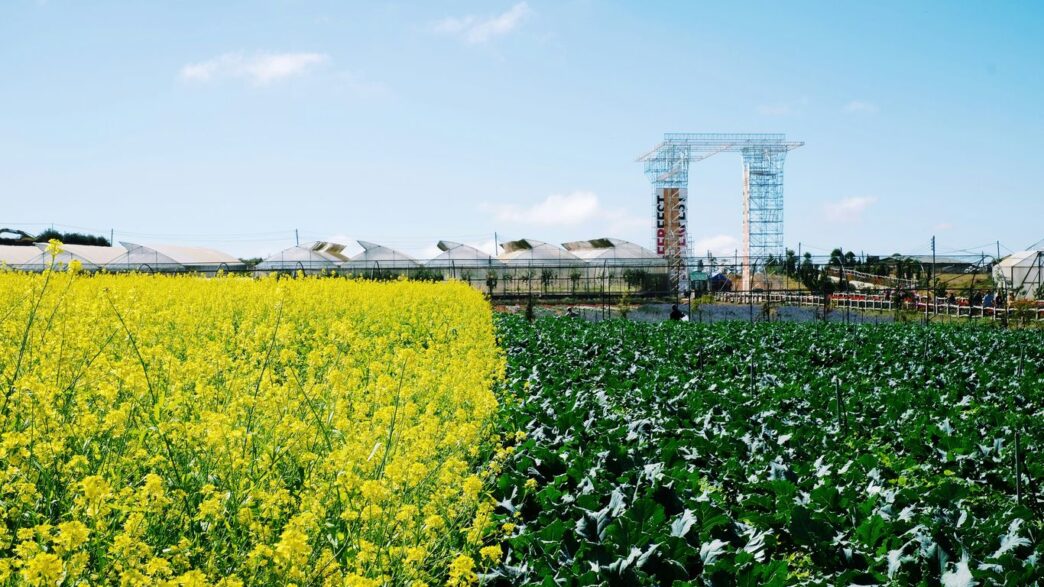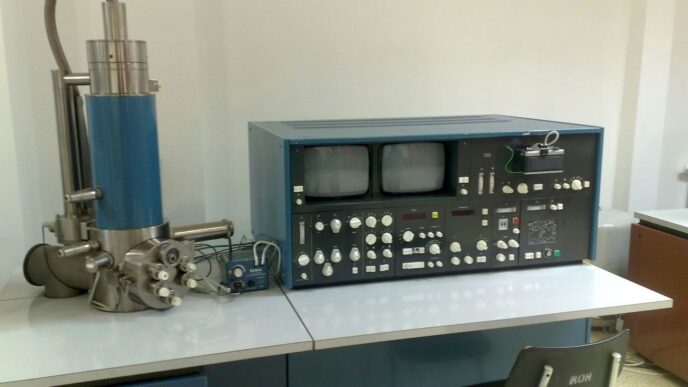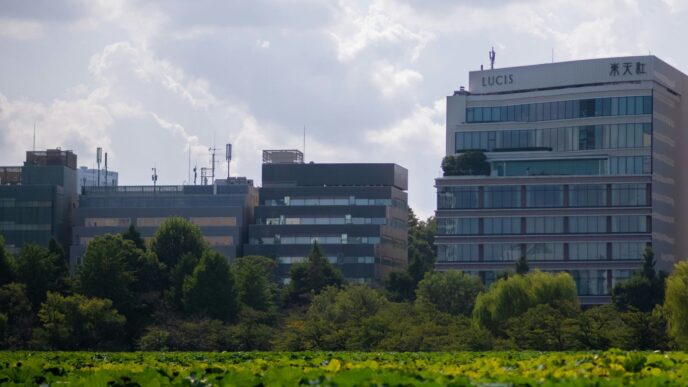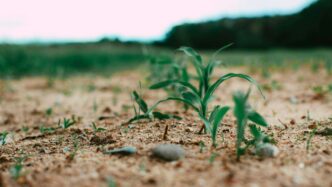Farming is changing, and a lot of that has to do with new science. We’re talking about crop biotechnology, which is basically using biology to make crops better. Think stronger plants, more food, and even healthier food. It’s pretty wild how much it can help us grow more food, deal with tough weather, and make farming kinder to the planet. Let’s break down how this stuff is shaping the future of what we eat.
Key Takeaways
- Crop biotechnology helps plants fight off bugs and diseases better, meaning less need for sprays.
- It makes crops tougher, so they can handle dry spells or salty soil, which is great for tough climates.
- This science can boost how much food we get from each plant and make growing cycles faster.
- We can make crops more nutritious, like adding vitamins, to help people get better food.
- Crop biotechnology plays a big part in feeding more people and making farming more sustainable.
Enhancing Crop Resilience Through Biotechnology
Farming hasn’t always been easy, right? We’ve all seen crops struggle with bad weather or get wiped out by bugs. That’s where biotechnology steps in, offering some pretty smart ways to help our plants tough it out. It’s all about giving crops a better chance to survive and thrive, even when things get tough.
Developing Resistance to Pests and Diseases
Remember when the papaya industry in Hawaii was almost gone because of a nasty virus? Biotechnology came to the rescue by creating a papaya variety that could fight off the ringspot virus. Pretty neat, huh? This isn’t just a one-off; scientists are working on making other crops, like potatoes and tomatoes, naturally resistant to diseases that are hard to control with sprays. This means less need for chemical pesticides, which is good for the environment and for us.
- Reduced pesticide use: Crops can be engineered to defend themselves, cutting down on the need for chemical sprays.
- Disease management: New varieties can withstand specific viruses, bacteria, or fungi that would normally destroy them.
- Healthier crops: Plants that aren’t constantly fighting off infections are generally stronger and produce better.
Adapting Crops to Environmental Stresses
Climate change is a big deal, and it’s making farming trickier. We’re seeing more droughts, saltier soils, and weird temperature swings. Biotechnology is helping us develop crops that can handle these kinds of stresses. Think of it as giving plants a built-in survival kit for tough conditions. This means we can potentially grow food in places that were too difficult before.
Improving Drought and Salinity Tolerance
Some crops just can’t handle dry spells or salty soil. Biotechnology allows us to introduce genes that help plants use water more efficiently or tolerate higher salt levels. This is a game-changer for regions struggling with water scarcity or land that’s become too saline for traditional farming. Being able to grow crops in these challenging environments is key to making sure we have enough food for everyone.
| Trait | Conventional Breeding | Biotechnology Approach | Outcome |
|---|---|---|---|
| Drought Tolerance | Slow, limited | Faster, more precise | Crops survive with less water |
| Salinity Tolerance | Difficult, slow | Targeted gene transfer | Crops grow in salty or coastal soils |
| Heat Tolerance | Limited success | Precise modification | Crops withstand higher temperatures |
Boosting Agricultural Productivity with Crop Biotechnology
Farming has always been about getting the most out of the land, right? Well, crop biotechnology is like giving farmers a whole new set of super-tools to do just that. We’re talking about making plants work harder, grow better, and produce more food, all while using resources more wisely. It’s a pretty big deal when you think about feeding a growing world.
Increasing Crop Yields Through Genetic Modification
This is probably the most talked-about aspect. By carefully changing a plant’s DNA, scientists can help it produce more grain, fruit, or vegetables. It’s not just about making plants bigger; it’s about making them more efficient at converting sunlight, water, and nutrients into food. Think of it like fine-tuning an engine to run at its best. This precision allows us to get more food from the same amount of land, which is super important.
Accelerating Crop Improvement Cycles
Traditionally, breeding new crop varieties took ages. Farmers would cross plants, wait for seeds, grow them, and repeat, generation after generation. Biotechnology speeds this up dramatically. Techniques like marker-assisted selection let breeders pinpoint desirable genes much faster. We can also use methods like micropropagation to create many copies of a superior plant quickly. This means better crops get to farmers years, not decades, sooner.
Optimizing Resource Management in Farming
Biotechnology isn’t just about making plants grow more; it’s also about making them smarter. We can develop crops that need less water, less fertilizer, or are more efficient at taking up nutrients from the soil. This means farmers can use fewer inputs, saving money and reducing the environmental footprint of agriculture. For example, crops engineered to tolerate salty soils can open up land that was previously unusable for farming. It’s about working smarter, not just harder, to make farming more sustainable and profitable.
Nutritional Advancement Via Crop Biotechnology

It’s pretty amazing what scientists can do these days to make our food better for us. We’re not just talking about making crops grow bigger or faster, but actually making them healthier to eat. This is where crop biotechnology really shines, helping us tackle some serious health issues.
Biofortification for Enhanced Vitamin and Mineral Content
Think about it: what if the food we eat could naturally give us more of the vitamins and minerals we need? That’s the idea behind biofortification. It’s a way to boost the nutritional value of staple crops, like rice or corn, by tweaking their genes. For example, Golden Rice was developed to help people get more Vitamin A, which is a big deal in places where people don’t get enough from their regular diet. This isn’t just a small tweak; it’s about making everyday foods a more powerful source of essential nutrients.
Developing Crops with Improved Nutritional Profiles
Beyond just adding specific vitamins, biotechnology can also improve the overall quality of nutrients in crops. This might mean increasing the amount of protein, making fats healthier, or even reducing allergens. The goal is to create foods that are not only filling but also provide a more balanced and beneficial nutritional package. It’s like giving our food a health upgrade from the inside out.
Combating Malnutrition Through Food Enrichment
Malnutrition is a huge problem worldwide, affecting millions, especially children. Crop biotechnology offers a practical way to fight back. By developing crops that are naturally richer in key nutrients, we can make a real difference in people’s diets, particularly in communities where access to diverse foods is limited. This approach can help prevent deficiencies that lead to serious health problems, making a tangible impact on public health. It’s a smart way to use science to make sure more people get the nutrition they need to thrive.
Sustainable Farming Practices Enabled by Biotechnology
Reducing Reliance on Chemical Pesticides and Herbicides
Farming has relied on chemicals like pesticides and herbicides for a long time to keep crops safe and weeds down. It works, sure, but it can really mess with the environment. Think about it: these chemicals can wash into rivers, harm helpful insects, and even affect the soil over time. Biotechnology offers a way out of this cycle. We can develop crops that naturally fight off pests or tolerate certain weeds without needing a chemical spray. This means farmers can use fewer of these products, which is better for the land and for anyone living nearby. It’s about working with nature, not against it.
Promoting Soil Health and Nutrient Cycling
Healthy soil is the backbone of good farming. When soil is depleted, crops don’t grow as well, and farmers often have to add more synthetic fertilizers. Biotechnology can help here too. Some new crop varieties are better at pulling nutrients from the soil, meaning less fertilizer is needed. Other biotech tools can help us understand soil microbes better – those tiny organisms that are super important for breaking down organic matter and making nutrients available to plants. By supporting these natural processes, we can keep the soil fertile for longer, reducing the need for artificial inputs and keeping those nutrients cycling where they belong.
Minimizing Environmental Impact in Agriculture
Overall, biotechnology is pushing agriculture towards a gentler footprint on the planet. Beyond reducing chemical use and improving soil, it helps in other ways. For instance, developing crops that need less water or can grow in tougher conditions means we can farm more efficiently without straining resources. It also means we can potentially farm on land that wasn’t suitable before, reducing pressure on pristine natural areas. Think about it: if crops are more resilient, there’s less chance of a total crop failure due to a sudden storm or pest outbreak, which saves resources and reduces waste. It’s a big shift towards making sure our food production doesn’t cost the Earth.
The Role of Gene Editing in Modern Crop Biotechnology
Precision Modification of Plant DNA
Gene editing is a game-changer in how we develop new crops. Think of it like having a super-precise "find and replace" tool for a plant’s genetic code. Unlike older methods that might insert new genetic material, gene editing lets scientists make really small, targeted changes to a plant’s existing DNA. This could mean tweaking a gene to make a plant less susceptible to a certain disease or helping it use water more efficiently. This precision means we can develop crops with specific, desirable traits much faster and with more control than ever before. It’s a big step up from just randomly shuffling genes around.
CRISPR-Cas9 Applications in Crop Improvement
CRISPR-Cas9 is the star player in this gene editing revolution. It’s like a molecular scissor that can be guided to a specific spot in the DNA to make a cut. Scientists use this to:
- Turn off genes that make a plant vulnerable to pests or diseases.
- Modify genes to help crops better handle tough conditions like drought or salty soil.
- Fine-tune genes that affect things like nutrient content or how long a harvested crop stays fresh.
For example, researchers have used CRISPR to develop wheat that’s more resistant to fungal infections. This means farmers can use fewer fungicides, which is good for the environment and the bottom line. Potatoes have also been edited to resist blight, a disease that historically caused massive crop failures.
Developing Crops with Targeted Traits
What’s really exciting is how specific we can get. We’re not just aiming for general improvements anymore. We can now design crops with very particular characteristics in mind. This could be:
- Nutritional Boosts: Imagine rice with more Vitamin A or wheat with higher protein levels, directly addressing malnutrition in certain populations.
- Environmental Adaptations: Crops that can thrive in areas with less rainfall or soil that’s not ideal for traditional farming.
- Reduced Input Needs: Plants that require less fertilizer or are naturally resistant to common pests, cutting down on chemical use.
This targeted approach is key to creating a more resilient and sustainable food system for the future.
Addressing Global Food Security Challenges
Meeting the Demands of a Growing Population
The world’s population is growing, and that means we need more food. Simple as that. By 2050, estimates suggest we’ll need to feed around 10 billion people. That’s a lot of mouths to feed, and traditional farming methods are already stretched thin. We’re seeing yields plateau in many areas, and the land we have isn’t always the most productive. Biotechnology offers a way to get more food from the land we have, and sometimes, from land that wasn’t very useful before. Think crops that can grow in tougher spots or produce more per plant. It’s about making sure there’s enough food for everyone, without needing to clear vast new areas for farming.
Ensuring Food Availability in Diverse Climates
Climate change is making things tricky. We’re seeing more extreme weather – droughts, floods, heatwaves – and these can wipe out crops. Biotechnology helps us develop crops that can handle these new conditions. We’re talking about plants that can survive with less water, tolerate salty soils, or withstand higher temperatures. This is super important for regions that are already struggling with food security and are often hit hardest by climate shifts. It means farmers in places like arid regions or coastal areas can keep growing food even when the weather gets rough.
The Indispensable Role of Crop Biotechnology
So, why is crop biotechnology so important for feeding the world? Well, it’s not just one thing. It’s a whole toolbox that helps us tackle big problems.
- Higher Yields: We can develop crops that produce more grain, fruit, or vegetables on the same amount of land. This is a direct way to increase food supply.
- Better Nutrition: Biotechnology can also make crops more nutritious. This means we can fight malnutrition by getting more vitamins and minerals into staple foods that people eat every day.
- Resilience: As mentioned, making crops tougher against pests, diseases, and tough weather means less crop loss and more reliable harvests.
- Resource Efficiency: New crop varieties can often use water and nutrients more effectively, which is good for the environment and can lower farming costs.
It’s clear that as we look ahead, relying solely on older farming methods just won’t cut it. Biotechnology gives us the tools to adapt and produce the food we need, in a way that’s more sustainable and can reach more people, even in challenging environments.
Looking Ahead
So, where does all this leave us? It’s pretty clear that crop biotechnology isn’t just a passing trend; it’s a major player in how we’ll grow food in the future. From making crops tougher against pests and bad weather to packing more nutrients into them, this science offers real solutions to some big problems, like feeding everyone and being kinder to the planet. Of course, there are still questions and discussions to be had, and we need to be smart about how we use these tools. But the potential is huge. By continuing to explore and responsibly use these advancements, we’re setting the stage for a farming world that’s more productive, more sustainable, and better equipped for whatever comes next.
Frequently Asked Questions
What is crop biotechnology?
Crop biotechnology is like giving plants superpowers! It’s using science to make plants better, like helping them fight off bugs, survive dry weather, or even have more vitamins. Think of it as a super-smart way to help crops grow stronger and healthier.
How does biotechnology help crops resist pests and diseases?
Imagine a plant that can defend itself! Biotechnology can help plants build their own defenses against harmful bugs and sicknesses. This means farmers don’t need to use as many bug-killing sprays, which is better for the environment and for us.
Can biotechnology make crops grow more food?
Yes, it can! By making plants stronger and better able to use resources like sunlight and water, biotechnology can help them produce more food. This is super important because more people are living on Earth and need to be fed.
Does biotechnology make food healthier?
Absolutely! Scientists can use biotechnology to add extra vitamins and minerals to crops, like making rice with more Vitamin A. This helps people get the nutrients they need, especially if they don’t have access to a wide variety of foods.
Is crop biotechnology safe for the environment?
Many scientists believe that crop biotechnology can help the environment. By making crops tougher and reducing the need for chemical sprays, it can lead to cleaner water and soil. It’s all about finding smarter, more sustainable ways to farm.
What is gene editing, and how is it used in crops?
Gene editing is like having a super precise pencil to edit a plant’s instruction manual (its DNA). It allows scientists to make very specific changes to a plant’s traits, like making it more resistant to drought, much faster and more accurately than older methods. This helps create better crops for the future.

